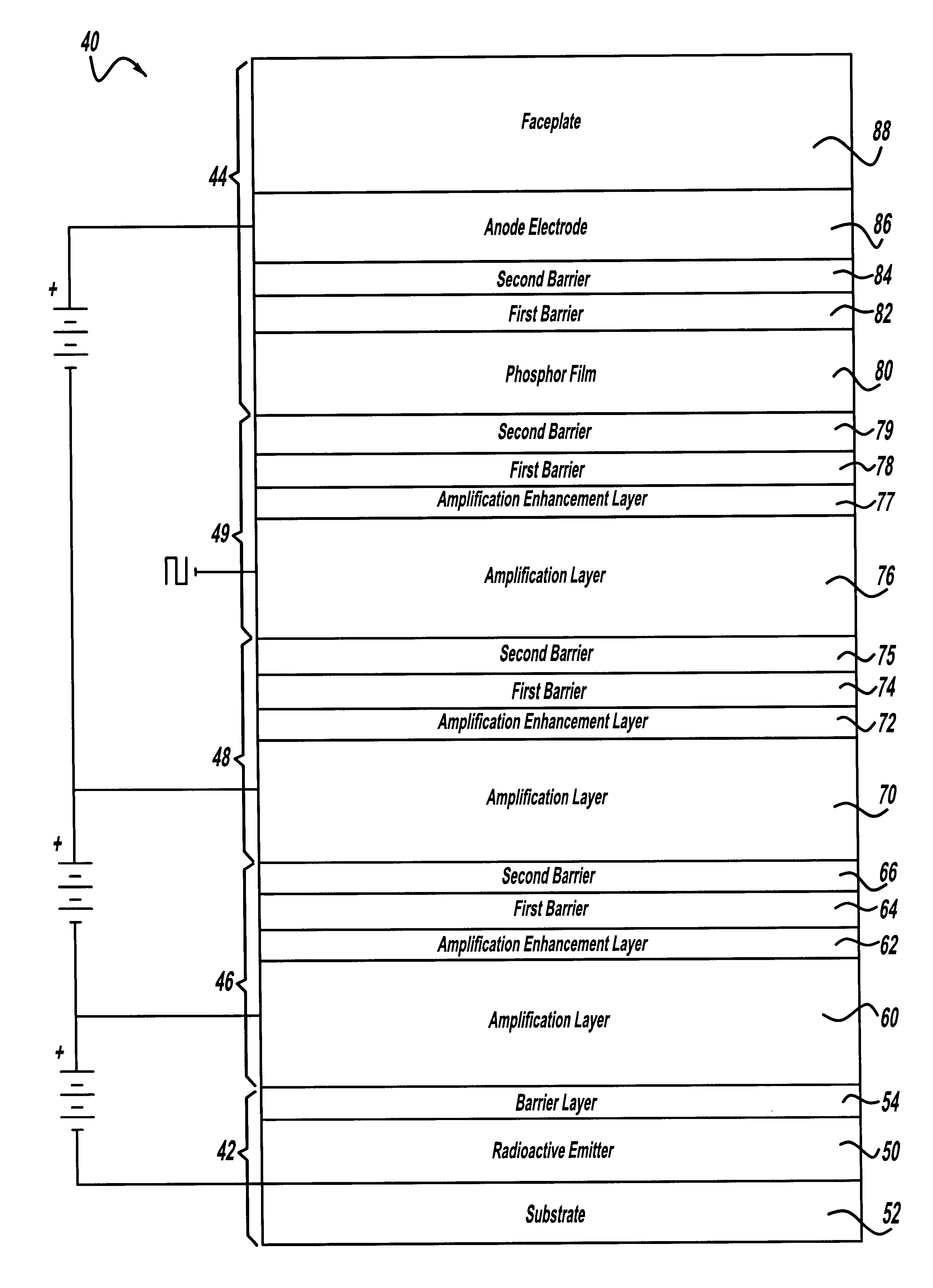Electron amplification channel structure for use in field emission display devices
a technology of emission display device and amplifier channel, which is applied in the direction of discharge tube main electrode, discharge tube luminescnet screen, discharge tube with screen, etc., can solve the problems of electromagnetic emission, unsupported vacuum envelope that limits the screen size, and excessive bulk and weight, and achieves high efficiency field emission, superior optical characteristics, and low cost
- Summary
- Abstract
- Description
- Claims
- Application Information
AI Technical Summary
Benefits of technology
Problems solved by technology
Method used
Image
Examples
Embodiment Construction
FIG. 1 schematically depicts an exemplary field emission display (FED) device 10 found within the prior art. This flat panel display comprises an x-y electrically addressable matrix of cold-cathode microtip or "Spindt" type field emitters 12 opposing a faceplate 14 coated with a transparent conductor layer 16 and a phosphor light emissive layer 18. A distance or gap 19, generally on the order of 100 to 200 .mu.m, is maintained between the emitters 12 and the phosphors 18 by spacers 20. The volume of space between the emitters 12 and the phosphors 18 is evacuated to provide a vacuum environment with a pressure generally in the range of 10.sup.-5 to 10.sup.-7 Torr. This environment is generally gettered (by means not illustrated) to mitigate against contamination of the internal parts, and to maintain the vacuum.
As illustrated, each emitter 12 has the shape of a cone and is coupled at its base to an addressable emitter electrode conductor strip or layer 22, through which the emitter 1...
PUM
 Login to View More
Login to View More Abstract
Description
Claims
Application Information
 Login to View More
Login to View More - R&D
- Intellectual Property
- Life Sciences
- Materials
- Tech Scout
- Unparalleled Data Quality
- Higher Quality Content
- 60% Fewer Hallucinations
Browse by: Latest US Patents, China's latest patents, Technical Efficacy Thesaurus, Application Domain, Technology Topic, Popular Technical Reports.
© 2025 PatSnap. All rights reserved.Legal|Privacy policy|Modern Slavery Act Transparency Statement|Sitemap|About US| Contact US: help@patsnap.com



